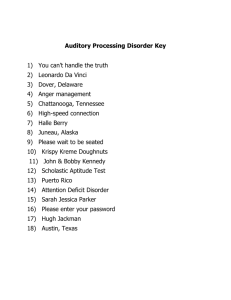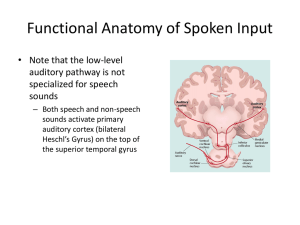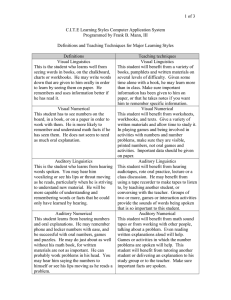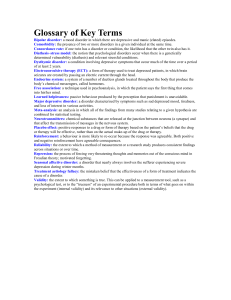LEARNING DISABLED
advertisement
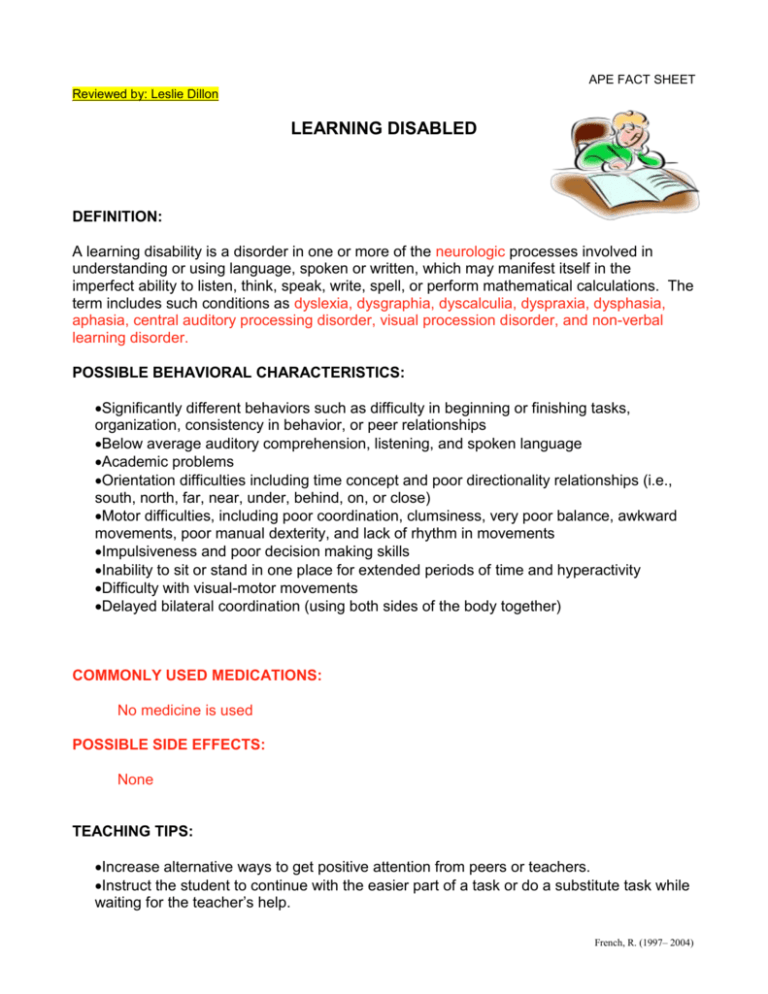
APE FACT SHEET Reviewed by: Leslie Dillon LEARNING DISABLED DEFINITION: A learning disability is a disorder in one or more of the neurologic processes involved in understanding or using language, spoken or written, which may manifest itself in the imperfect ability to listen, think, speak, write, spell, or perform mathematical calculations. The term includes such conditions as dyslexia, dysgraphia, dyscalculia, dyspraxia, dysphasia, aphasia, central auditory processing disorder, visual procession disorder, and non-verbal learning disorder. POSSIBLE BEHAVIORAL CHARACTERISTICS: Significantly different behaviors such as difficulty in beginning or finishing tasks, organization, consistency in behavior, or peer relationships Below average auditory comprehension, listening, and spoken language Academic problems Orientation difficulties including time concept and poor directionality relationships (i.e., south, north, far, near, under, behind, on, or close) Motor difficulties, including poor coordination, clumsiness, very poor balance, awkward movements, poor manual dexterity, and lack of rhythm in movements Impulsiveness and poor decision making skills Inability to sit or stand in one place for extended periods of time and hyperactivity Difficulty with visual-motor movements Delayed bilateral coordination (using both sides of the body together) COMMONLY USED MEDICATIONS: No medicine is used POSSIBLE SIDE EFFECTS: None TEACHING TIPS: Increase alternative ways to get positive attention from peers or teachers. Instruct the student to continue with the easier part of a task or do a substitute task while waiting for the teacher’s help. French, R. (1997– 2004) Inform the student in advance of anticipated difficult tasks or situations where extra control will be needed. Decrease the length of the task and make lessons brief. Provide short, clear instructions. Break lessons into shorter segments (task-analysis). Present new information in small quantities. Allow the student a “mini-break” when his/her tension level appears to be building. Deliver reinforcements immediately and more frequently than usual. Repeat directions to the student. Have the student repeat/explain the task back to you. Obtain frequent responses and input from the student. Avoid changing the learning environment frequently (use routines). Eliminate distractions (visual and auditory). Use visual images and indicators to support written or spoken instruction. (Davis & Dillon, p. 57) Information on this sheet contains only suggested guidelines. Each student must be considered individually, and in many cases, a physician’s written consent should be obtained. http://www.ncld.org/ http://www.learningrx.com/some-types-of-learning-disabilities.htm French, R. (1997– 2004)








